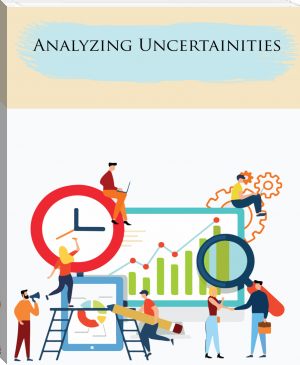Day Trade For Living, Andrew Aziz [bill gates books to read .txt] 📗

- Author: Andrew Aziz
Book online «Day Trade For Living, Andrew Aziz [bill gates books to read .txt] 📗». Author Andrew Aziz
Symb
Realized Type , c ompany Name
SRPT
Short Sarep a Therapeutics
Summary 6,50 . 00
I
<
ra i3
IOS/02/11 6 09:41:58
Default
My profit on June 2, 2016 (only 12 minutes into my day).
Do It?
My philosophy in trading is that you need to master only a few solid setups to be consistently profitable. In fact, having a simple trading method consisting of a few minimal setups will help to reduce confusion and stress and allow you to concentrate more on the psychological aspect of trading, which is truly what separates the winners from the losers.
Now that you have learned the basics of a few trading strategies, let's review the actual process of planning and making a trade. You now understand the setup you want to trade, but as a beginner trader, you will have a hard time planning and initiating a trade beforehand. It is very common to have a good setup but then enter or exit a trade at the wrong times and lose money while everyone else is making money. I believe the solution lies in developing a process for your trading. Plan a trade, and trade a plan.
I have a Ph.D. in chemical engineering, so I firmly believe in the process approach to trading. I can safely say that this is a major reason for my success . My trading process looks like this:
Morning routine
Develop watch list
Organize a trade plan
Initiate the trade according to plan
Execute the trade according to plan
Journaling and reflection
You must remember that what makes a trade profitable is the correct execution of all of the steps in the above process. Write down your reasons for entering and exiting every trade. Everyone can read this book or dozens of other books, but only a few people have the discipline to execute
correctly. You might have a good setup but select a wrong stock to trade, such as a stock that is being manipulated by computers and institutional traders. Perhaps you will find a proper stock to trade, but you will enter the trade at the wrong time. A bad entry will make a mess of your plan and you will eventually lose your money. You can find a good stock to trade and enter a trade correctly, but if you don't exit properly, you will turn a winning trade into a losing one. All of the steps of the process are important.
Think about something significant that you do frequently in your lif e, and then think of how it can best be done. Now, consider how you do it currently. This is a great thought process for traders to have. When you take a trade, you need to ensure that you are focused on the right things both prior to entering it as well as during the trade. Creating a system for this thought process will take away most of the emotional hang-ups traders experience when looking to enter into a trade as well as managing it while they are in it.
This brings you to my final rule:
Rule 11: Profitable trading does not involve emotion. If you are an emotional trader, you will lose your money.
Education and practice give you a perspective of what matters in trading, how you trade, and how you can grow and develop your skills. Once you have a perspect ive on what matters, you can proceed to identify the specific processes on which to focus. The key to success is knowing your exact processes. Often you will learn them the hard way - by losing money.
I have found that trading, sticking to my plan and the discipline inherent in my trading methodology have had a snowball effect of positive habits in my life in general, and these habits have contributed to even more trading success. For example, I start my trading process by following the same routine when I get up in the morning. I always go for a morning run before the trading session starts. As mentioned before , I live in Vancouver, Canada, and the market opens at 6:30 a.m., my time . I wake up at 5 a.m. every morning. I go for a run from 5 to 5:45 a.m. (usually between 7 and
10 kilometers (or around 4 to 6 miles)). I come home, take a shower, and at 6 a.m. start developing my plan.
I have found that when my body has not been active prior to trading, I will make poor decisions. There are scientific studies showing that aerobic exercise has a positive effect on the decision making process . People who regularly participate in an aerobic exercise (such as running for at least 30 minutes) have higher scores on neuropsychological functioning and performance tests that measure such cognitive functions as attentional control, inhibitory control, cognitive flexibility, working memory updating and capacity, and information processing speed. You can easily read about these topics on the Internet or you can email me in our chatroom and I will send you some videos and information about these facts. I stopped drinking coffee and alcohol, and I have stopped eating animal-based food, and my performance levels have increased significantly. Not eating meat and fish (any living beings that are marked with blood), and not using alcohol, coffee, tobacco and all other drugs lifts you above the curse and accelerates you forward in every aspect of life.
In day trading, simply being better than average is not sufficient. You must be significantly above the crowd to win in day trading. Unfortunately, day trading often appeals to impulsive people, gamblers, and those who feel that the world owes them a living. You cannot be one of them, and you should not act like one of them. You need to start developing the discipline of a winner.Winners think, feel, and act di ff erently than losers. You must look within yourself, discard your illusions, and change your old ways of being, thinking and acting. Change is hard, but if you want to be a successful trader, you must work on changing and developing your personality . To succeed, you will need motivation , knowledge, and discipline.
Now, back to trading: as discussed previously, trading cannot be looked at as a hobby. You must approach trading seriously. As such, I wake up at 5 a.m., go for a 30-to-45-minute run, take a shower, get dressed , and eat oatmeal for breakfast prior to firing up my trading station at 6 a.m. I am awake, alert, and motivated when I sit down and start building my watch list. This morning routine has tremendously helped my mental preparation
for coming into the market. So, whatever you do, starting the morning out in a similar fashion will pay invaluable dividends. Rolling out of bed and throwing water on your face 15 minutes in advance just does not give you sufficient time to be prepared for the market 's opening. Sitting at your computer in your pajamas or underwear does not put you in the right mindset to attack the market. I know, because I have experienced all of these scenarios.
My watch list comes from a specific scan that I use every morning. I will not look anywhere else because I am confident that the stocks on that scanner will have the best opportunity to set up for me to trade. I will vet each stock in the same way, using a checklist where I can determine if it is actually tradeable for me. My watch list is built by 6:15 a.m., and I will not add anything to it after that time because there won' t be enough time to review new stocks and plan for a trade. This allows me to watch the tickers on my watch list for the 15 minutes prior to opening. This actually leads into the next step in my process.
During the 15 minutes prior to opening, I watch the tickers on my watc h list and develop trade plans for them based on the price action I am seeing. This is the most difficult part, and it requires experience , knowledge and education. Many traders fail at this step. When the bell rings at 6:30 a.m. (9:30 a.m. New York tim e), I'll have my plans in place written on note cards because it is too easy to forget what I've seen on each ticker coming into the open. What is my plan if it sets up to the long side? What's my plan if it sets up to the short side? What setup do I want to see? What are my profit targets? Where will my stop be? Is the profit window large enough for the trade to make sense? Just asking yourself questions like these when you are planning your trades will give you a significant advantage because you can then go in with a battle plan and stick to it. If it is written down close to my face I can easily refer to it, and that eliminates the anxiety that I used to feel when that bell rang. All I am doing at the opening is looking for my signal and trigger to enter the trade.
In the example above, I saw that SRPT had gapped down 15%. I knew that there wasn't much interest in buying the stock. Who would dare to buy when a stock gapped down 15% overnight? Most investors are actually
trying to get out and sell before it goes down even further, as though there's something seriously wrong with the company. I could not find any support or resistance nearby, therefore I decided to watch VWAP and chose a VWAP short trade.
Once the stock sets up, signals, and triggers an entry, I will enter without question (well, that's the plan anyway). Sometimes I may second-guess myself, but not too often. I have my profit targets written out on my trade plan, as well as the technical level that I am basing my stops on, so after entry I am just concentrating on hitting my marks and booking profit. There are some that say that knowing when to exit is the hardest part of the trade. It can be extremely tough not to exit the trade too early if you do not have a pre-set plan. If you have a plan ahead of time and you stick to it, you will have a better chance of letting your winning trades work and cutting your losses off quickly instead of the other way around. This will also help with managing your emotions while in the trade. Recently I talked to one of my students about filtering out the noise. This strategy goes a long way to help do that so you can focus on the trade.
Once the trade is done, I will reflect on how well my plan worked and how well I stuck to what I had written. Most of the reflection on my trades will come in the evening when I review and recap my trades from the day. I believe one of the key things forgotten





Comments (0)